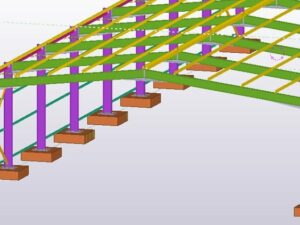Computational Fluid Dynamics Fundamentals Course 2
- Description
- Curriculum
- FAQ
- Reviews

Welcome to Part 2 of my Computational Fluid Dynamics (CFD) fundamentals course! In this course, the concepts, derivations and examples from Part 1 are extended to look at 2D simulations, wall functions (U+, y+ and y*) and Dirichlet and Neumann boundary conditions. The course starts from first principles and you will rapidly develop working CFD solutions using the Excel sheets, MATLAB code and Python source code provided (you can complete the course with either Excel, MATLAB or python). By the end of the course, you will understand the importance of heat flux balances, residuals and wall functions (y+, U+ and y*). This course also presents a unique working example for temperature wall functions (never seen before on the internet), to show you exactly how wall functions are employed by CFD solvers. No prior experience is required and no specific CFD code/coding experience is required! You do not need ANSYS Fluent, OpenFOAM, Star CCM or any other CFD to use this course.
This course does not teach you how to use specific functionality in different CFD packages. Instead it provides fundamental understanding that you can use to understand how all CFD codes work behind the scenes and actually see the matrices as they are assembled and solved. You can use this understanding throughout your career in CFD to move between different CFD codes and understand the fundamental features that make them all work. This information is essential for any world-class CFD engineer.
-
2Dirichlet and Neumann Boundary Conditions
The course starts off by reviewing the finite volume discretisation of the 1D heat diffusion equation. The formulation of Dirichlet and Neumann boundary conditions are then introduced and a comparison of the resulting matrix equations is provided
-
3Dirichlet and Neumann Boundary Conditions - Example Problem
In this example problem, the 1D heat diffusion is solved along a 5m long bar. A fixed temperature of 200 degrees is applied at the right end and a fixed heat flux of 100 W/m2 is applied at the left end.
-
4Transport Equations in 2D
The heat diffusion equation is now extended to 2D. The extended form of the finite volume discretisation is introduced and the special treatment required for cells with multiple boundary faces is also introduced.
-
5Transport Equations in 2D - Worked Example
In this worked example, the heat diffusion equation is solved in a 2D plate. The plate has fixed temperatures of 100 degrees, 150 degrees, 200 degrees and 250 degrees applied to each of its faces.
-
6Wall Functions
The concept of wall functions and wall treatment is introduced comprehensively from first principles. The wall functions for the kinematic viscosity and thermal diffusivity are derived and their implementation in the finite volume method is presented.
-
7Wall Functions - Worked Example
The example problem from the first chapter (heat diffusion in a 1D bar) is now extended to include a temperature wall function at the right end.






Social Network